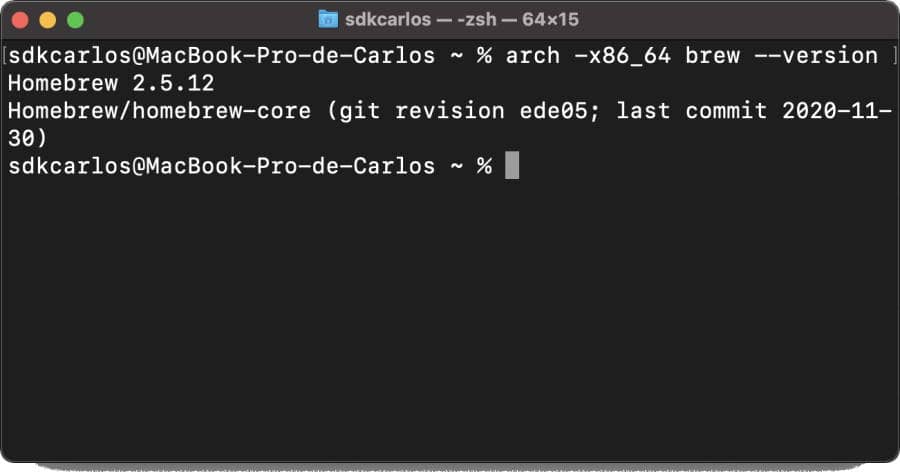Every developer knows about the Homebrew package manager that makes it really easy to install, update applications, and utilities on a Mac. The installation of homebrew remains the same for the new macOS version BigSur, but we will explain how to it anyway in this article.
I-ve been using big sur for a day now on a 2016 iMAc and a 2019 Macbook pro. Knowing that I have a extensive use of brew, I was surprised that I only had to manually install command line tools from here. Let's see how to fix macOS Big Sur 11.2 Homebrew and Git Error#bigsur #applem1. However, there is Homebrew formula that works on macOS Big Sur and the new Apple silicon. It supports: Intel Silicon: macOS Big Sur, Catalina, and Mojave; Apple Silicon: macOS Big Sur; The Homebrew Formula does have conflicts that you may need to avoid. It is a solution for those with the new Apple silicon.
Note for ARM processors users
If your Mac uses the Apple Silicon (M1 Chip), you will have a problem with the installation till the date of publication of this article. You can read in this another article how to solve the issue of Homebrew that doesn't run on the M1 chip.

Adobe audition cc 2015 fuller. If your processor has an Intel-based processor, then you can follow the tutorial without any inconvenience (which is short anyway).
Installing Homebrew
Start by opening the Terminal and start the homebrew setup by simply downloading the installation script of homebrew with curl and then running it with bash. You can easily do this with a single command like this:
The installation script does a variety of stuff as setting the installation directory and so on. After running the command, the terminal will probably prompt for your password if it's required. Then, the installation will take a while and once it finishes, you can easily verify if it works running the following instruction:
The command should generate the following output:
Happy coding ❤️!
You can install Git on macOS Big Sur, Catalina, Mojave, Sierra, or an older Mac OSX version by a couple of options, one is to use Homebrew to install Git by installing Homebrew first and then issuing:
You can also download install a easy to install package file getting the latest git version from the SourceForge .
This will download the latest version of Git to your desktop/download area as a dmg file, (it says mavericks in the file name but just ignore that)
Open the dmg file, then Control/Right Click the git.pkg Audio interface for audacity. file to install.
When Git is installed check in the Terminal, launch the Terminal from /Applications/Utilities and check the version:
And the version is displayed
To see where it is located
And the location is shown
Upgrading Git from a previous version to the latest
If you have previously installed Git you can upgrade to the latest version by uninstalling the previous install by using the uninstall.sh script…
Go through the same process of downloading and mounting the latest git .dmg.
Your previous Git configuration settings and working repositories remain intact.
Trumping Xcodes Older Git
If you have Xcode already installed and have installed command line tools then you already have Git, probably an older version which is distributed with Xcode, this is installed in a path that takes precedence at:
The Mojave version is:
Homebrew Macos Big Sur Torrent
To run the latest version you need to adjust your shell path so that /usr/bin/git runs after /usr/local/bin
You need to adjustshell path , the path will be set in either .zshrc, .bashrc or .bash_profile in your home directory, more likely .zshrc in the more recent macOSes.
So add into the path similar to the below and keep what you already have in the path, each segment is separated by a colon:
Restart or reload the Terminal and the newer Git version will now be used.
Learn how to set up a Git workflow with your local OSX client and a remote webserver.
Macos Big Sur Brew
Using Git
